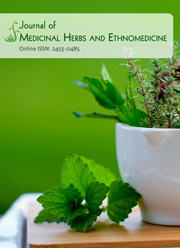Exploration for analysis of medicinal foods used to manage dyslipidaemia in Sri Lankan traditional medicine
DOI:
https://doi.org/10.25081/jmhe.2023.v9.8439Keywords:
Traditional medicine, Non-communicable diseases, Medicinal foods, Antidyslipidaemic effectsAbstract
The medicinal foods used to manage non-communicable diseases in Sri Lankan traditional medicine are slowly but steadily disappearing from the country due to many reasons. This study is the first stage of the research project aimed to explore and analyze the medicinal foods used to manage dyslipidaemia in traditional medical practices of Sri Lanka. A qualitative study covering the whole island was conducted cross-sectionally, supplemented by a document review including ancient textbooks and talipot palm (Corypha umbraculifera) leaf manuscripts. The study included all the registered traditional medical practitioners of the country, more than 55 years of age. Practitioners with poor memory and feeble health and those who were not in current practice were excluded. The first participant was selected purposively and the rest by using the snowball sampling technique. The investigator administered, validated, open-ended, semistructured questionnaire was the tool used, and the interviews were conducted face to face or using either telephone, zoom, or WhatsApp technology. The saturation was achieved by the 25th participant and data were analysed using the framework analysis technique. Nine medicinal foods including three herbal congees, one herbal beverage, one green leaf salad, and four curry preparations with antidyslipidaemic effects were explored. Sri Lankan native medicine possesses many medicinal foods with antidyslipidaemic effects and they should be explored, scientifically studied, and used as evidence-based management for the smooth control of diabetes mellitus.
Downloads
References
Ediriweera, D. S., Karunapema, P., Pathmeswaran, A., & Arnold, M. (2018). Increase in premature mortality due to non-communicable diseases in Sri Lanka during the first decade of the twenty-first century. BMC Public Health, 18, 584. https://doi.org/10.1186/s12889-018-5503-9
Eussen, S. R. B. M., Verhagen, H., Klungel, O. H., Garssen, J., van Loveren, H., van Kranen, H. J., & Rompelberg, C. J. M. (2011). Functional foods and dietary supplements: products at the interface between pharma and nutrition. European Journal of Pharmacology, 668(S1), S2-S9. https://doi.org/10.1016/j.ejphar.2011.07.008
Min, A. D. (2022). Scientific Concepts of Functional Foods in Europe Consensus Document. British Journal of Nutrition, 81, S1-S27. https://doi.org/10.1017/S0007114599000471
Nishteswar, K. (2016). Ayurvedic Concept of Food and Nutrition. Journal of Nutrition & Food Sciences, 6(4), 4-11. https://doi.org/10.4172/2155-9600.1000530
Ramalingum, N., & Mahomoodally, M. F. (2014). The therapeutic potential of medicinal foods. Advances in Pharmacological Sciences, 2014, 354264. https://doi.org/10.1155/2014/354264
Ravishankar, B., & Shukla, V. J. (2007). Indian systems of medicine: a brief profile. African Journal of Traditional, Complementary and Alternative Medicines, 4(3), 319-337. https://doi.org/10.4314/ajtcam.v4i3.31226
Sharma, G. (2017). Pros and cons of different sampling techniques. International Journal of Applied Research, 3(7), 749-752.
Watson, A. H. A. (2022). Qualitative Interviewing during the COVID-19 Pandemic Part 1 : The Literature on Telephone Interviews. Department of Pacific Affairs In Brief series. https://doi.org/10.25911/1PQ9-SG51
Weragoda, P. B. (1980). The traditional system on medicine in Sri Lanka. Journal of Ethnopharmacology, 2(1), 71-73. https://doi.org/10.1016/0378-8741(80)90033-1
Published
How to Cite
Issue
Section
Copyright (c) 2023 Damean De silva, Upul Senarath, Pathirage Kamal Perera

This work is licensed under a Creative Commons Attribution 4.0 International License.



 .
. 